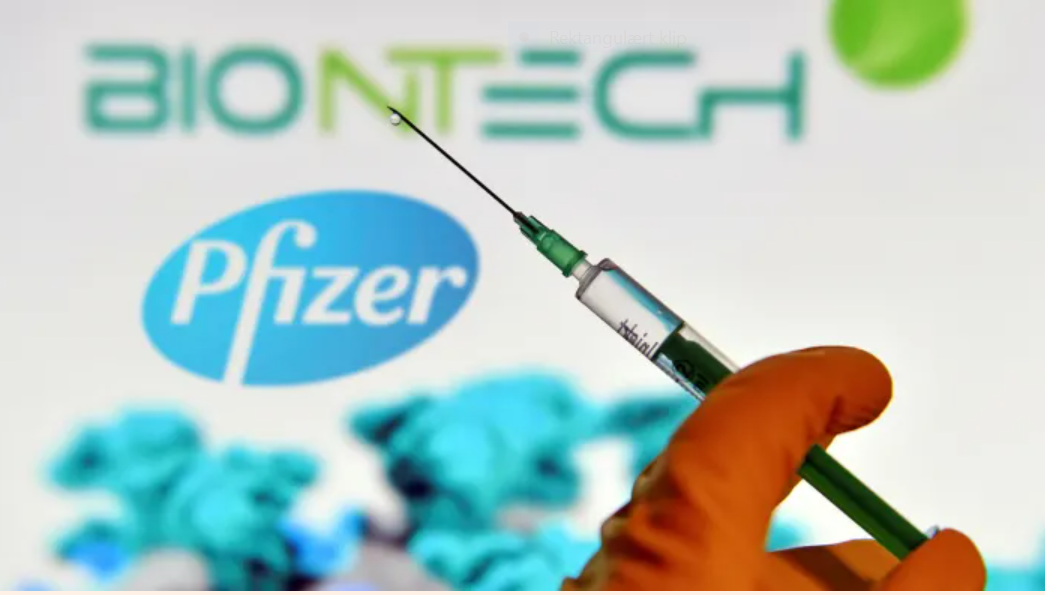ABN Amro har lavet en omfattende analyse af producenterne af corona-vacciner – hvornår de kommer på markedet, hvem der først får vaccinerne. Men selv om der kan vaccineres milliarder af mennesker det næste år eller to, så er der behov for at fastholde en række corona-regler som at holde afstand helt ind i 2022, mener ABN Amro. At komme gennem coronakrisen bliver en langvarig affære.
The race to a COVID-19 vaccine
- A total of 48 COVID-19 vaccines are currently in clinical trials, with two highly effective vaccines about to get emergency market access
- Emergency use or conditional marketing vaccines to be used to inoculate socially vulnerable groups as soon as early next year
- Detailed timelines and safety assessments suggest Q3 2021 will be the beginning of rollouts to the broader population
- The current wave of lockdown measures will likely be in place for a longer period given seasonal variations common to coronaviruses
- Countries will begin a rapid relaxation of lockdown rules in Q2 and especially Q3 2021, but social distancing will become a thing of the past only in 2022
- Lots of uncertainty in our analysis and several downside risks, including virus mutations or lack of public readiness to get inoculated
In this note, we attempt to answer the important question of when and how will vaccine development take place. Moreover, we lay out the likely path out of this wave of lockdowns around the introduction of vaccines against COVID-19. In addition, we explain the risks to our analysis, as there are more than a dozen moving parts and non-binary outcomes in every one of them.
Timelines for vaccines and restrictions
As time goes on and health authorities monitor safety on a larger population, it is likely that other parts of the population will have an opportunity to get inoculated. We estimate that the first vaccinations in the US and Europe will begin in January. Considering most vaccine candidates require two doses 28 days apart, it will not be until sometime in Q2 2021 that these socially vulnerable groups build some level of immunity against COVID-19. We expect large swaths of the population to gain access to vaccines starting in Q3 2021, once regulators deem that vaccinating hundreds of millions of healthy individuals is safe and that serious side effects are negligible on a population level.
While vaccination remains our best bet in the long-term, therapeutics, as well as non-pharmacological measures (face masks, quarantines, social distancing) can be powerful weapons in an arsenal to contain COVID-19. Widespread testing will also play a key role in certain regions. We think all of the aforementioned will be necessary to end the pandemic return to ‘normal’. See below for our assumptions regarding the likely path for vaccines and lockdown measures.
Vaccines currently in development
While there are currently no licensed vaccines to prevent infection with SARS-CoV-2 or COVID-19, more than 200 vaccines are being developed according to the WHO, of which 48 are in clinical evaluation.
VIRUS VACCINES

The virus is either modified (weakened) by altering its genetic code or completely inactivated (rendered non-infectious) using chemicals. Making them requires large quantities of infectious virus. The advantage of an attenuated live virus is that it induces the same immune response as natural infection. The disadvantage as aforementioned is that large quantities of the virus are required. Most vaccine candidates developed by Chinese firms use this type of technology, which is the same technology used in for example measles, rubella, mumps, yellow fever, and small pox vaccines.
VIRAL VECTOR VACCINES
A virus such as adenovirus is genetically engineered so that it can produce the coronavirus proteins in the body. Like virus

vaccines, these viruses are weakened so they cannot cause disease. The safe virus serves as a ‘platform’ or ‘vector’ to deliver the
protein that triggers an immune response. A vaccine candidate being developed by the University of Oxford and AstraZeneca, as well as a candidate in development by Johnson & Johnson use this technology.
PROTEIN-BASED VACCINES
A protein is extracted from the virus (alive or inactivated), purified, and injected as a vaccine. For coronavirus, this protein is the spike protein. Virus-like particles (VLP) work in the same way. These use fragments of protein shells that mimic the coronavirus’s outercoat. These can trigger a strong immune response, but can be challenging to manufacture. To work, these vaccines might require adjuvants (immune stimulating molecules) delivered alongside the vaccine.
NUCLEIC ACID VACCINES
Instead of a virus, a protein antigen, or a virus expressing the protein, nucleic coding for the antigen is injected. DNA plasmid enters the nucleus and gets translated into messenger RNA (mRNA hereafter) for expression of protein. mRNA can also be directly injected (no translation required), but this is less stable than DNA. RNA- and DNA-based vaccines are safe and easy to develop as producing them involves making genetic material only, not the virus itself. However, this technology is new and unproven as no DNA- or RNA-based vaccines have been commercialized in human beings. Finally, while producing nucleic-acid vaccines may be easier, logistically they present challenges as they must be stored at freezing temperatures. For example, the vaccine candidate being produced by Pfizer and BioNTech needs to be stored at -70⁰C.
Which vaccines will be ready first?
As shown in Figure 1, 12 vaccine candidates are currently in advanced Phase 3 trials. Several Chinese vaccine candidates have already received emergency use authorisations in China. One of the two vaccines developed by Sinopharm has also been approved in the UAE for emergency use. The EMA’s human medicines committee (CHMP) has initiated rolling reviews of the AstraZeneca, Pfizer/BioNTech, and Moderna vaccines on 1 October, 6 October, 16 November, respectively.
Of the vaccine candidates in late-stage development in the West, the closest to approval are the Pfizer/BioNTech and Moderna products. The AstraZeneca vaccine should be next in line, followed by the vaccine in development by Johnson & Johnson’s Jansen subsidiary. The protein-based vaccine candidate developed by Novavax should be last amongst these. The Pfizer/BioNTech vaccine hit its case accrual for its final efficacy analyses, while the Moderna and AstraZeneca vaccines hit their case accrual for its first interim efficacy analyses.
All three products showed high effectiveness, at 95%, 94.5%, and 70% respectively. The AstraZeneca vaccine candidate did show 90% effectiveness in the one-dose study cohort, but further examination of the clinical data is required before drawing any conclusions. These are high levels of efficacy in comparison to existing vaccines, so these results are extremely encouraging.
The Pfizer/BioNTech and Moderna vaccines will likely be granted emergency use authorisation in the US and Europe in the back half of December or early next year. The UK trial of AstraZeneca was the first to begin Phase 3 studies already back in May, and despite being setback temporarily by a pause, could be granted a conditional marketing approval in Europe early next year, and probably earlier in the UK.
Data from the Johnson & Johnson and AstraZeneca US trials should be available sometime in Q1 2021 and emergency use authorisation granted shortly thereafter. The Novavax vaccine candidate is currently conducting a Phase 3 study in the UK and will start their larger US study any day now. Novavax could be granted an emergency use license in the first half of 2021.
Who will get a shot and when?
It will take time for large swaths of the broad population to get inoculated once one of the aforementioned vaccines is successfully developed. Manufacturing capacity will be initially limited and vaccine availability will be in the hundreds of million doses for the first few months following approval (which is low considering two doses are required under most vaccines). However, production capacity will not be the biggest hurdle to overcome.
Instead, it is unlikely that regulators will provide authorisation to give these vaccines to everybody with limited safety data. Initially, vaccines are likely to be used very carefully in people that are at high risk of severe disease. According to health authorities in the US and Europe, these are likely to be frontline health workers, people in care homes, and those with comorbidities such as obesity or diabetes. For example, the European Commission has out guidelines on a strategy to vaccine distribution:
In the US, Helene Gayle co-authored a government-commissioned report on how to distribute a coronavirus vaccine (see here). The conclusion of the report is that vaccines should be allocated in a way that maximizes benefits to patients and saves the greatest number of lives possible. The report recommends distributing a vaccine in four phases.
Phase 1 would include front line workers followed by older adults living in congregate settings, such as nursing homes and similar settings. The last part of Phase 1 would include select high-risk individuals with underlying conditions.
Phase 2 would allow immunization of older adults not included in Phase 2.
Phase 3 is when vaccine supplies would become available to a broader set of the population who are essential to restoring full economic activity (including both adults and children). An important caveat is that broad immunization of children (who are at low risk of severe disease, but can spread to virus to the immunocompromised) is dependent on whether new COVID-19 vaccines are tested and approved on children, which is currently not the case with any vaccine candidate in development.
Finally, Phase 4 would include all other healthy adults who are not included in Phase 3.
Overall, initial vaccines approved for emergency use will likely only be used on a limited subset of the population which meets this criteria. Only once enough safety data is available (probably six months following the last dose on all trial participants) will the FDA and EMA fully license a vaccine for broad use. There are different levels of evidence that are needed to establish safety in pharmaceuticals, but in the case of a vaccine against COVID-19, where you are potentially going to be vaccinating billions of people, the level of evidence needed is very high.
We estimate that vaccines will be fully licensed in the US and Europe beginning in H2 2021 once sufficient data around safety is established.






